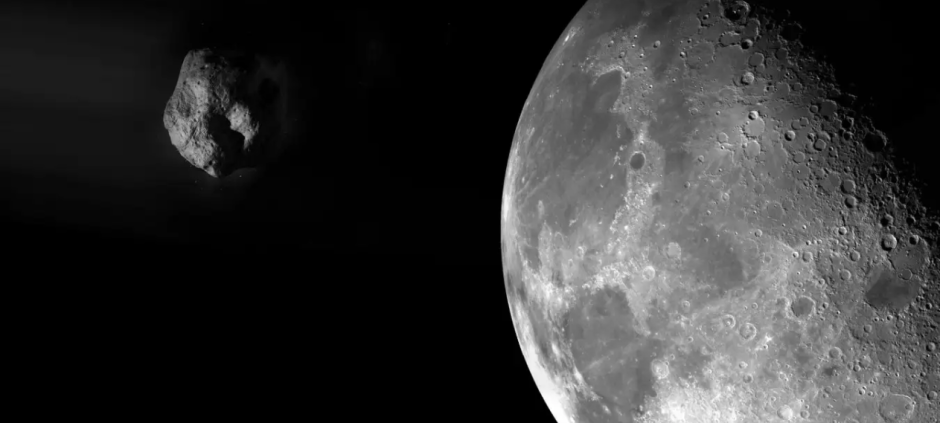An asteroid initially believed to have a higher chance of colliding with Earth may instead strike the Moon, according to new calculations by astronomers. NASA’s Center for Near Earth Object Studies (CNEOS) had previously estimated that asteroid 2024 YR4 had a 2.3% chance of hitting Earth in 2032, up from an earlier 1% estimate. However, new data from University of Arizona astronomer David Rankin indicates a reduced 0.3% chance that the 90-meter-wide asteroid could impact the Moon.
The Moon’s lack of an atmosphere means that if the asteroid were to collide, it could create a crater several hundred meters wide, potentially sending debris into space. Some of this debris could return to Earth, but scientists believe any risk posed to the planet would be minimal. “There is a possibility that some material could hit Earth, but I highly doubt it would cause any significant harm,” Dr. Rankin told New Scientist.
Also Read: NASA Reassures Public About Close Asteroid Encounters
Despite the ongoing uncertainty surrounding 2024 YR4’s trajectory, NASA continues to study the asteroid. Scientists expect that further observations could further reduce its chances of impacting Earth. “There have been several objects in the past that were initially flagged as high risk and later removed from the list as more data came in,” NASA explained, adding that future observations might even assign the asteroid a zero-risk rating.
In the meantime, global space agencies are exploring various strategies to prevent potential asteroid collisions, including sending spacecraft to deflect the asteroid or using nuclear blasts to change its course. China has recently joined these efforts, announcing plans to establish a “planetary defense post” to monitor and study hazardous asteroids. China also revealed its ambition to launch a mission around 2030 aimed at studying and potentially altering the trajectory of an asteroid.
Asteroid 2024 YR4 is set to pass by Earth again in 2028, providing astronomers with additional opportunities to refine their predictions and better assess the likelihood of an impact in 2032.











